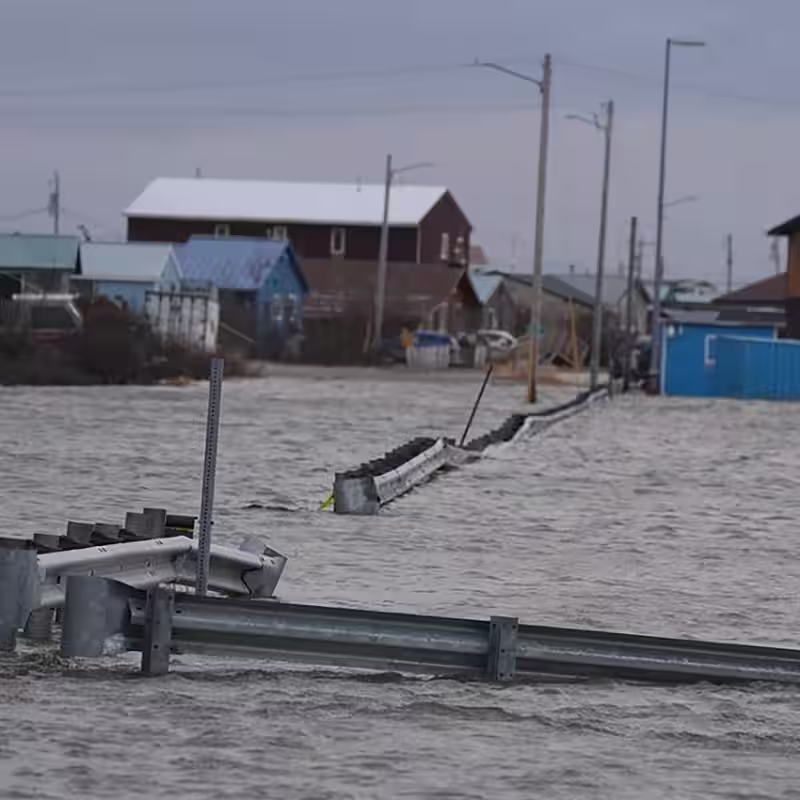Table of Contents
- Alaska Flooding Emergency: A Race Against Time
- Massive Rescue Efforts in Kipnuk and Kwigillingok
- How Typhoon Halong Reached Alaska
- ‘Once Rare, Now Routine’: Climate Warnings from Tribal Leaders
- Sources
Alaska Flooding Crisis: Storm Devastates Remote Bering Sea Villages
In a dramatic and harrowing response to extreme weather, U.S. emergency teams launched large-scale rescue operations across remote Alaskan villages on Sunday after floodwaters from the remnants of Typhoon Halong tore through coastal communities, sweeping homes off their foundations and leaving residents stranded .
The Alaska flooding crisis has gripped the nation as the Coast Guard, Alaska National Guard, and state law enforcement deployed C-130 aircraft and Blackhawk helicopters to reach the isolated villages of Kipnuk and Kwigillingok—communities with no road access and populations under 500 each .
Massive Rescue Efforts in Kipnuk and Kwigillingok
Dozens of residents were airlifted to safety as floodwaters rose up to seven feet above normal levels. Emergency officials confirmed that 11 homes—seven in Kipnuk and four in Kwigillingok—were completely ripped from their wooden pylons and carried away by the surge .
While no fatalities were reported by Sunday evening, three people remained unaccounted for in Kwigillingok, and additional missing persons were reported in Kipnuk. Some villagers suffered injuries from flying debris during the storm’s peak, according to Amy Hendricks of the Association of Village Council Presidents .
“It is a very serious situation,” said Jeremy Zidek, spokesperson for the Alaska Division of Homeland Security and Emergency Management. “These are some of the most remote communities in the United States.”
Impact Snapshot: Alaska Flooding (October 13, 2025)
| Location | Population | Homes Destroyed | Rescues Conducted |
|---|---|---|---|
| Kipnuk | ~450 | 7 | Dozens |
| Kwigillingok | ~350 | 4 | Dozens |
How Typhoon Halong Reached Alaska
Meteorologists say the unprecedented storm formed when above-average sea temperatures near Japan collided with cold Siberian air masses, creating a powerful extratropical cyclone that tracked across the Pacific and slammed into western Alaska with 80 mph winds .
Joshua Ribail of the National Weather Service explained that while typhoon remnants occasionally reach Alaska, the intensity and destruction of this event are exceptional—and increasingly common.
‘Once Rare, Now Routine’: Climate Warnings from Tribal Leaders
Vivian Korthuis, CEO of the Association of Village Council Presidents, issued a stark warning: “The remnants of the typhoons have been the exception—but now they are becoming the norm.”
She emphasized that the 48 villages along the Bering Sea coast—home to 56 federally recognized tribes and roughly 30,000 people—lack adequate public safety infrastructure to handle repeated disasters of this scale. “We need more search-and-rescue capacity, better early warning systems, and resilient housing,” she said.
Governor Mike Dunleavy pledged full state support, stating, “Every effort will be made to help those hit by this storm.” Rescue operations are being coordinated from Bethel, located about 100 miles northeast, which is serving as the primary staging hub.
With another storm system forecast to arrive by Tuesday night, fears are mounting that Kwigillingok and neighboring Kongiganak could face renewed flooding—just as recovery efforts begin.




